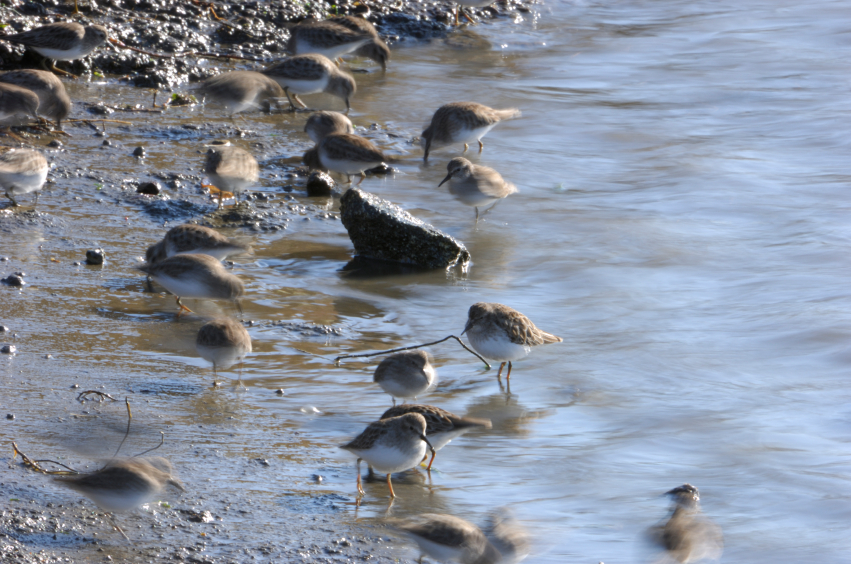Now that we have transitioned from fall into winter, the Sacramento Valley is welcoming incredible numbers of migratory and wintering birds to the region every day. The habitat these species are now benefiting from is the result of months of deliberate water and land management activities, as well as decades of work to establish the varied land uses that make up this habitat, including flooded rice fields, the establishment of privately managed wetlands as well as the creation of National Wildlife Refuges and State Wildlife Areas. All of this habitat is dependent upon the availability of high quality water supplies throughout the year.
One of the unique aspects about the Sacramento Valley is that, as a region, it now prepares for the arrival of these birds with a whole new irrigation season. Once the traditional irrigation season in the Sacramento Valley is over in the fall and the crops have been harvested, the professional water resources managers who operate the irrigation districts in the region begin the second irrigation season, when they deliver additional water to the Refuges, Wildlife Areas and managed wetlands and also flood an additional 500,000 to 600,000 acres of harvested rice fields.
The main purpose of this irrigation season is to produce habitat for the new crop of birds that are arriving in the Valley, taking advantage of the role it plays in supporting the Pacific Flyway. These birds of all types – waterfowl, shorebirds, raptors, and others – will feed, rest, and, in some cases, winter and breed in the Valley. Were it not for the water deliveries provided by this second irrigation season, this habitat would not exist.
Recently, Mark Petrie, Director of Conservation Planning for Ducks Unlimited’s Western Regional Office, provided a written submittal to the State Water Resources Control Board in which he described the dependence these lands, and the habitat values they provide, have on reliable water supplies.
“Over the past two decades, considerable progress has been made to enhance habitat for migratory waterfowl, wintering shorebirds, raptors, riparian songbirds and other wetland dependent species using the Sacramento Valley. This includes expansion and enhancement of National Wildlife Refuges and State Wildlife Areas, agricultural practices that provide wetland functions, increases in the amount of privately managed wetlands and, most importantly, reliable, high-quality water supplies. The water rights possessed by water suppliers in the Sacramento Valley have allowed them to supply water to harvested rice fields during the winter to provide habitat, irrigate managed wetlands and enter into arrangements to deliver water to Refuges and Wildlife Areas. The efforts of the water suppliers to install state-of-the-art fish screens have further ensured the reliability of their water supplies, allowing them to divert water year-round, even in the winter months when water is needed to provide critical habitat in the Sacramento Valley. Without a secure, reliable supply of water, these wetland values will be lost.”
Right now, and for the next three to four months, it is an ideal time to view birds in the Sacramento Valley. Millions of birds will be traveling through or wintering in the region. As much as the sheer numbers of birds are impressive, the diversity of species is also remarkable. Driving around the Valley this time of year, in addition to the prevalent species of waterfowl, you are also likely to see bald and golden eagles, hawks, and falcons, groups of pelicans, herons and egrets, and shorebirds, including killdeer, sandpipers and long-billed dowitchers. I encourage you to drive around the Sacramento Valley this winter and appreciate the different species of birds that call it home this time of year. The best places to find them are on the lands that have been irrigated in anticipation of their arrival.





